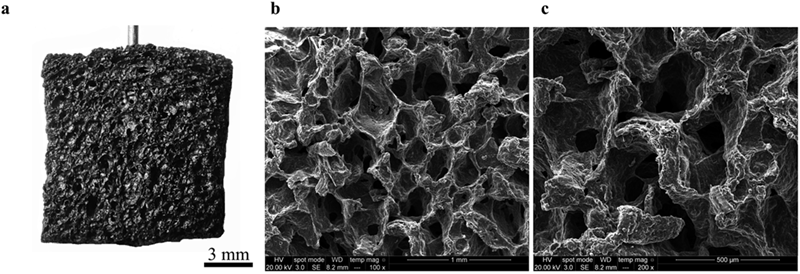When biology influences technology: using bread to desalinate water
Though water covers two-thirds of our planet’s surface, water scarcity remains a persistent issue. Mechanical Engineering’s Philip LeDuc and Adam Wood have an unconventional solution: bread.
Despite water covering two-thirds of the earth’s surface, water scarcity remains a persistent issue among developed and developing countries alike. Fortunately, Adam Wood and Philip LeDuc have been working on a new solution.
It began with LeDuc’s international travel and thinking about water scarcity as one of the world’s future major challenges. “I’ve been collaborating with people in Portugal for over a decade, and they used to have these giant salt mounds near the ocean,” said LeDuc, a professor of mechanical engineering. “This made me think about biology near the salt and how that could help desalinate seawater for people. I used to say, ‘I bet you there’s bacteria in there that has probably learned to break down salt.’” This bacteria, he theorized, could be used as a natural filter. However, he explained, no student would take on this direction of research for 10 years, until Ph.D. student Adam Wood came along. Wood took these ideas and theorized using mangroves instead of bacteria. Mangroves, trees with large groupings of exposed roots that live along the edges of the water, have evolved over time to transform salt water into fresh water.
We’re trying to take something that already exists in the world and usually goes to waste and use it to produce freshwater from salty water.
Adam Wood, Ph.D. student, Mechanical Engineering
They developed the mangrove system, but Wood discovered an even more clever idea shortly after: hooking up a $5 solar panel with a bonfire could create a self-sustainable system, using wasted bread as a filtration system, similar to the mangroves. “The big idea behind this is that typically, desalination systems are quite expensive. We’re trying to take something that already exists in the world and usually goes to waste and use it to produce freshwater from salty water; hence the discarded bread,” Wood said.

Source: College of Engineering
Utilization of bread to create carbon-based electrodes for water desalination.
How will this wasted bread be acquired? Wood suggested collaborating with bread suppliers using their takeback agreements, wherein supplies not sold in grocery stores or restaurants are returned to be disposed of.
While there are multiple systems of water desalination, LeDuc and Wood’s process uses capacitive deionization, requiring only a set of carbon electrodes and a low voltage power supply. It also requires a low-resistance pathway for oxygen diffusion and water transport, for which the bread was a surprisingly perfect candidate. “It’s very high in carbon content. It has an inherently porous architecture, and the microstructure is repeatable. In general, it’s really easy to work with, and it’s one of the most wasted foods in the world,” said Wood. Their approach is meant to address one of the biggest problems in the world, water scarcity, while also developing a solution that is more cost-effective and sustainable than current technologies.

Source: College of Engineering
Carbon-based electrode created using bread.
“One of the big takeaways from this,” explained LeDuc, “is that our electrodes are extremely low in cost, relative to current electrodes that people have been researching. They are also competitive in terms of their performance.” LeDuc emphasized the beauty of using something as simple as bread to desalinate water, excited to share that it met a World Health Organization standard for salinity of drinking water.
Moving forward, LeDuc and Wood plan to examine scaling their system, the manufacturing process, and what actual operation will look like. For now, LeDuc is excited to see where nature and its incredible abilities to evolve will take him next in their research.
